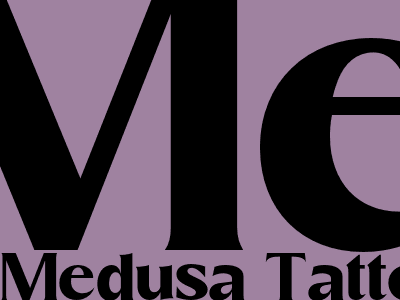Medusa Tattoo: Meaning, Symbolism, and History
Introduction
Medusa, the serpent-haired Gorgon from Greek mythology, has become a popular tattoo design in recent years. This article will explore the meaning, symbolism, and history behind Medusa tattoos, providing insights into why this mythological figure continues to captivate people today.
Medusa's Origin and Mythology
In Greek mythology, Medusa was one of three Gorgons, creatures with venomous snakes for hair. According to the myth, Medusa was once a beautiful priestess of Athena who was cursed by the goddess to become a hideous monster after being seduced by Poseidon in Athena's temple.
Anyone who looked directly at Medusa's face would turn to stone, making her a symbol of both fear and danger.
Medusa Tattoo Meaning and Symbolism
Medusa tattoos can hold various meanings and symbolisms, depending on the individual's interpretation:
- Protection and Empowerment: Medusa's gaze can be seen as a protective force, warding off negative energies or threats.
- Strength and Resilience: Medusa overcame her trauma and became a symbol of strength and resilience, particularly for women.
- Femininity and Power: Medusa represents the powerful and often misunderstood aspects of femininity, particularly her sexuality and ability to control men.
- Transformation and Growth: The myth of Medusa can be seen as a metaphor for personal transformation and overcoming adversity.
Historical and Cultural Significance of Medusa Tattoos
Medusa has been depicted in art and literature throughout history, from ancient Greek pottery to Renaissance paintings. In recent decades, Medusa tattoos have become increasingly popular, especially among women.
This resurgence may be attributed to the feminist movement and increased awareness of the power and complexities of female identity.
Variations of Medusa Tattoos
Medusa tattoos can be rendered in various styles, including:
- Traditional: Depicts Medusa as she appears in classical Greek mythology, with snakes for hair and a stern expression.
- Realistic: Aims to create a lifelike representation of Medusa, often with intricate details and shading.
- Abstract: Uses stylized or geometric shapes and lines to represent Medusa's essence and symbolism.
- Minimalist: Depicts Medusa with only a few simple lines or shapes, focusing on capturing her essence rather than her full form.
Placement and Size of Medusa Tattoos
Medusa tattoos can be placed on various parts of the body, depending on the individual's preference. Popular placement areas include:
- Chest: A central and prominent location that allows for larger, more elaborate designs.
- Arm: A versatile location that can accommodate both large and small tattoos.
- Back: A large area that allows for extensive and detailed designs.
- Leg: A less visible but still impactful location that can elongate the body's silhouette.
Choosing the Right Medusa Tattoo for You
When choosing a Medusa tattoo, consider the following:
- Intended meaning: Determine the specific meaning and symbolism you want your tattoo to convey.
- Style: Explore different tattoo styles to find one that aligns with your aesthetic preferences and the desired impact.
- Placement: Decide on the body part where you want the tattoo to be placed, considering the size and visibility you desire.
- Artist: Research and choose a reputable tattoo artist who specializes in the style you prefer and can translate your vision into a well-executed tattoo.
Conclusion
Medusa tattoos offer a rich and powerful symbolism that can express various meanings and emotions. From protection and empowerment to strength and transformation, Medusa's enduring allure continues to inspire tattoo enthusiasts worldwide.
Whether you choose a traditional, realistic, or abstract design, a Medusa tattoo can be a meaningful and visually striking expression of your individuality and values.

Comments